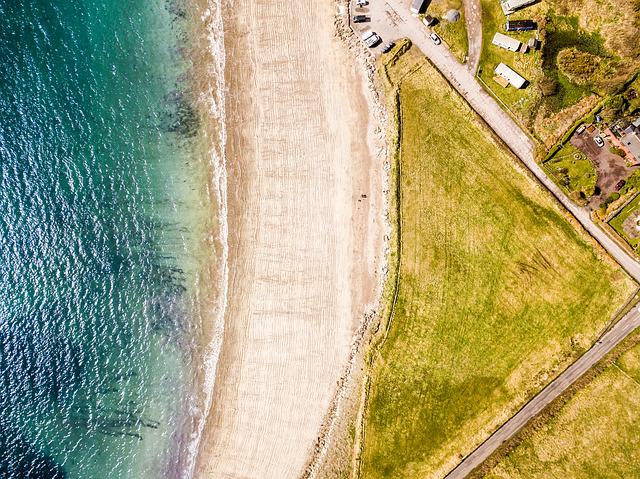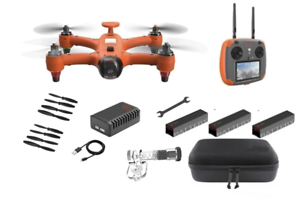
The regulations for drone fishing are important to understand if you plan on using one. You can also watch some instructional videos on how to fly a drone to catch fish. If you are concerned about drone ethics, please read our article. We'll be discussing some of the ethical issues surrounding drone fishing. You can also check out our drone fishing gear guides.
Regulations for drone fishing
It is possible to wonder what regulations apply when you are watching a YouTube video of a drone fishing for fish. There are many reasons to comply with local laws. But safety is the most important concern. In order to safeguard both you and your fish's lives, it is crucial to ensure that the right laws are followed. This article will discuss the most important regulations, and help you to follow them. Also, don't forget about the International Game Fish Association Rules.
Drones can't be flown over public areas, such as stadiums or sporting events. They can't carry weapons or stay within a half-mile of sporting events. Drone operators must also be able to view their aerial equipment at any time. In addition, drones cannot fly over people, stadiums, or critical infrastructure, as well as be a distraction to emergency response vehicles. If you are unsure about the rules for fishing with a drone, consult an attorney.

Many states have passed laws that govern the use of drones. However, others have not yet adopted them. For example, Illinois has recently enacted SB 2167. This bill bans drones from state parks. It also defines privacy rights and sets out the rules that drone operators must follow for both recreational and commercial purposes. It also prohibits drones from interfering or harassing hunters or other wildlife. These new laws are expected to be finalized in a few years.
Concerns about drone fishing
Drone fishing is controversial. There are companies that sell underwater drones capable of fishing for fish. These drones can be used to fish for fish. The process of fishing is often captured on video. The process of taking a fish from water is different. Those who are ethically concerned about this type of fishing may want to look elsewhere for their entertainment.
While there are obvious advantages to using drones for fishing, some have argued that they may be cheating the fishing population. Fishing has not changed much over the centuries, but using drones to catch fish might change that and decrease the thrill of the chase. A drone's use can pose problems for conservation. These are the ethical considerations to consider before you use a drone to fish.

Drone fishing is not a good option. It can damage the environment, and overfish endangered species. Some states allow drones to be used for recreational fishing. Others do not. Drone fishing has its limitations. They must be very expensive. The drones you buy might not be as capable of controlling the range, GPS functionality, lifting power, or control range that you need. A second problem is that drone fishing can cause fish to be lost if the line becomes tangled. The third issue is piloting.
FAQ
What is the main difference between a quadcopter or a helicopter?
A quadcopter, a four-rotor helicopter, flies just like a helicopter. It is equipped with four rotors, each of which can rotate independently. A hexacopter is similar to a quadcopter except that it has six rotors instead of four. Hexacopters offer more maneuverability and stability than quadcopters.
What US states do drones are legal in?
A drone can be legally operated for recreational purposes. The Federal Aviation Administration (FAA) has set up guidelines that allow people to use small unmanned aircraft systems (UASs). These UASs must first be registered with FAA to be allowed to be flown. Commercial operators can also fly these devices provided certain conditions are met by the FAA.
Can my drone be flown around my neighbourhood?
Yes! These are called UAVs (unmanned aircraft vehicles). There are many different types of drones that you can buy today, including small quadcopters as well as large fixed-wing aircraft. The FAA has recently issued new rules regarding the commercial use of UAVs, which means you can now legally fly them for business purposes. You should be aware, however, that UAVs flying near airports can cause interference with air traffic control systems. To operate one, you will need to obtain permission from the local authorities.
Can my drone be flown in my local park?
You can fly drones in parks around the globe. Due to safety concerns, certain countries don't allow you to fly drones in parks. You can fly drones legally in these places.
How can I keep drones from my home?
Drones are becoming more popular for home security and surveillance. You can prevent drone attacks by installing motion sensors around your home and using them to detect any unauthorised flying objects.
Statistics
- According to the multiple listing service (MLS), houses and apartments with drone photographs are up to 68 percent more likely to sell than those without pictures. (thedroneu.com)
- According to industry research from ZipRecruiter , there are 10 cities where the typical salary for a Drone Pilot job is above the national average. (dronesgator.com)
- According to ZipRecruiter, the minimum hourly wage of drone pilots is $20. (thedroneu.com)
External Links
How To
How to Fly Drones with Beginners
A drone refers to a remote-controlled aircraft designed for aerial photography, surveillance and scientific research. Drones have been in use since World War II. DJI's Phantom series of quadcopters was the first to be commercially used. Many types of drones have been made available since then, from beginner-friendly models such as the Parrot AR Drone 2.0, to high-end multi-rotor craft such as the DJI Mavic Pro.
There are several ways to fly a drone, including;
-
Remote control – This technique uses a control device attached directly to your hands that allows you steer the drone around its flight path. There are two main types for controllers: Joysticks or On/Off switches, which can be used to control the drone's flight path.
-
Manual Control – This method lets users remotely control the drone by using a smartphone app. The app will give you instructions.
-
Autonomous Flight - This method involves leaving the piloting duties to the drone itself. It basically flies autonomously without any human intervention. The drone must be equipped with a camera and sensors that can capture images and data in order to fly autonomously.
-
Triggered Flight – This method is very similar to manual flight. The pilot creates a route that the drone will follow until it reaches the destination. After the program is complete, the drone automatically returns to the ground.
-
Landing Gear – A few drones come with landing gear. This allows them land safely in the event of losing power or running out of battery.
-
Goggles - Pilots may wear goggles to shield themselves from flying debris.
-
Camera – Some drones have cameras, which allow you to take photos or videos from up high.
-
Obstacles - Some drones can be equipped with obstacle avoidance systems that prevent them from crashing into obstacles.
-
Speed - Some drones can reach speeds of over 40 mph.
-
Battery Life: Most drones have a battery life of between 20 and 30 minutes depending on how many power sources you use.
-
Range - Some drones can travel upto 30 miles depending on their models.
-
Power source – Some drones require external power sources, others require internal batteries.
-
Weight - Some drones weigh less than 1 pound, whereas other models weigh up to 4 pounds.
-
Size - From small drones that can be carried in the palm of one's hand to larger drones that weigh over 50 pounds, drones come in a variety of sizes.
-
Price - High-end drones can go for thousands of dollars, while low-cost models start at $100.